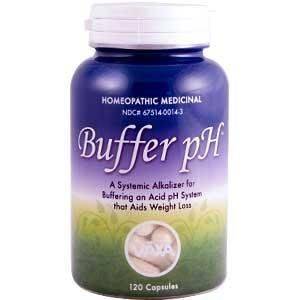Going Alkaline
Buffer pH - 120 - Capsule by Vaxa International.Buffer pH is a doctor-formulated homeopathic medicinal, designed to help the body naturally and safely balance an overly acid or overly alkaline system. Buffer pH has been VAXA's number one selling product since 1987. The medicinal contains an advanced multi-dimensional formulation which incorporates homeopathic remedies as well as herbal and nutritional base components. It is also free of gluten.
If you’re already someone who eats fairly clean, I have good news for you – you probably have a higher than average pH level. Yet you may be surprised to find that some of your favorite foods are actually acid-producing, and the ones you think are acidic really aren’t. Additionally, your pH will vary depending on the time of day, what you ate or drank the day before and even your stress levels.
If you want to boost your alkalinity, however, there are easy dietary adjustments you can make.
Here are 5 tips:
1. Pump up your produce intake.
This one isn’t rocket science, but many fruits and most vegetables are alkaline in nature. For fruits, avoid pomegranates, pineapples and raspberries, however. For vegetables, almost all are alkaline unless they are pickled or frozen.
2. Ban bread.
Unless you’re opting for a minimal amount of sprouted grains, get rid of tortillas, sourdough, white bread, whole grains and brown rice. On the acid-alkaline scale, most grains fall into the acidic range.
3. Chuck the condiments.
Most condiments, like ketchup, miso, mayonnaise or mustard are highly acidic. Also steer clear of canned vegetables, canned tuna and peanut butter (yes, even the organic kind).
4. Boost your beans and seeds.
Soy, navy and lima beans are all highly alkaline, while caraway, cumin, fennel and sesame seeds are good for raising pH, too.
5. Get rid of artificial sweeteners, but keep your stevia.
Popular sugar alternatives like honey, xylitol and beet sugar are all acidic, but stevia is alkaline. Who knew?
6. Reduce alcohol, dairy and coffee.
Your wine and cheese habit isn’t doing your pH any favors, so minimize these foods. And if you can swing it, give up your daily cup of joe, too.
If you want more information about which foods are alkaline and which are acidic, check out this handy resource guide.
How to Test Your pH?
By now you might be intrigued about giving this alkaline diet thing a shot, but how can you really tell if it’s working? The good news is that you can easily test your pH levels at home. Just head to your local drugstore or online retailer and pick up a pack of pH test strips.
You can test your pH levels often throughout the day, but try to do so at the same time each morning, as your body will be more acidic the earlier you measure. The goal is to get your morning urine pH between 6.5 and 7.5.
For saliva, your pH should be similar to your urine. Wait at least two hours after eating to measure your saliva pH. Fill your mouth with saliva and then swallow it. Repeat this step again to ensure your spit is clean, and then place some saliva on the pH strip.
If you’re not ready to completely overhaul your diet, that’s OK. Aim for about a 70-30 ratio of alkaline to acid foods. In addition to the foods you eat, know that stress can also affect your pH levels. Practice deep breathing, eat your veggies and drink plenty of water to lighten your acidic load.

